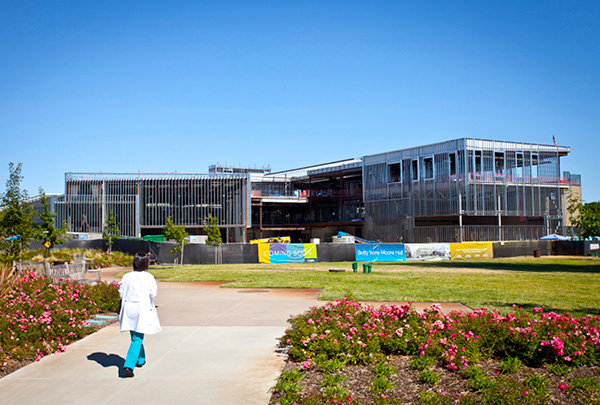
Innovative spaces promote innovations in health care
Imagine a building that engages students 24/7. Imagine classrooms that enhance novel curricula. Imagine an education that sparks innovation and develops leaders who shape the future of health care. The founders of the Betty Irene Moore School of Nursing at UC Davis imagined it and designed a physical space for how and where students learn.
“Health happens everywhere and learning is continuous. We need a building to sustain our vision of innovation,” says Heather M. Young, associate vice chancellor and founding dean. “Every square inch of Betty Irene Moore Hall efficiently and strategically furthers our mission.”
From writeable walls in small areas to propeller-shaped tables in larger, learning studios, the 70,000-square-foot School of Nursing home supports teamwork and active instruction. Collaborative spaces, known as learning commons, weave throughout to foster continual exchange between classroom and clinical learning.
Faculty and administrators are committed to creating an environment that promotes interdisciplinary exchanges among nurse practitioners and physician assistants pursuing master’s degrees, health care professionals working toward master’s and doctoral degrees, students pursuing new nursing careers, and students in medicine, pharmacy, social work and other future collaborators.
Through a suite of simulation labs, graduate students experience clinical-care situations in real time without risking safety. But health care is changing and more nurses practice outside of the hospital setting. In fact, a report by the California Board of Registered Nursing concluded that whereas 80 percent of nurses entered hospitals after graduation six years ago, today fewer than 60 percent do.
A one-bedroom apartment simulation suite in Betty Irene Moore Hall enables students’ hands-on practice with direct care in a home-like environment. From navigating stairs, a kitchen, bedroom and bathroom, students learn with confidence. The simulation also features glass walls for faculty observation.
“The simulation ensures students experience both typical health care situations and those that not all students encounter before they graduate, like a person nearing the end of life and dying,” says Theresa Harvath, associate dean for academics. “The suites create a fluid interchange between all aspects of their education.”
“We want our students to watch care being practiced, administer care themselves, then be able to teach another team member how to care for a person seeking treatment,” adds Debra Bakerjian, associate adjunct professor. “The philosophy is ideal for students to retain their knowledge at a very advanced level.”
Betty Irene Moore Hall blurs the lines between where classrooms begin and end. Just as students are re-examining established health care systems, school leaders recognize the critical link between formal structure and teaching practices. As Young explains, “This building will serve as a beacon and illustrate our transformative culture in a very tangible way.”

